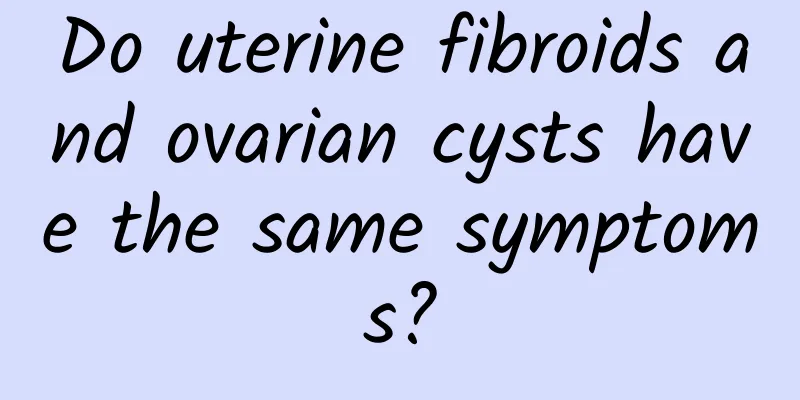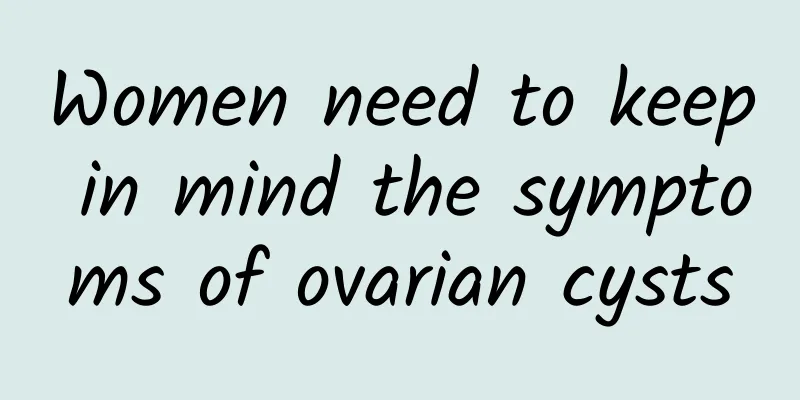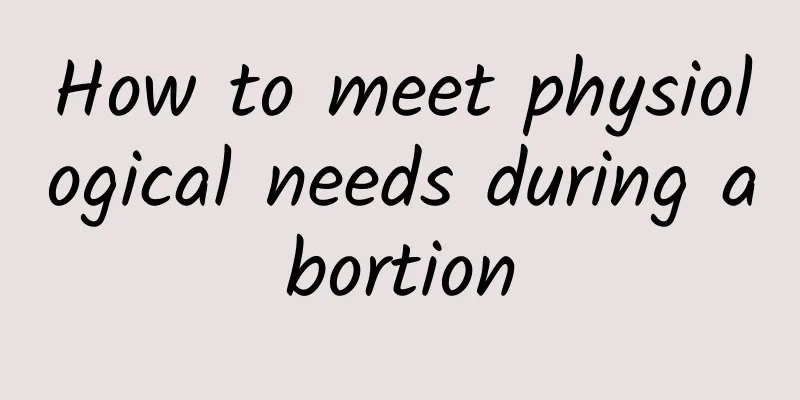Do uterine fibroids and ovarian cysts have the same symptoms?

|
Do not stimulate or extract ovarian cysts. Many patients report that the more they extract, the faster the cyst grows. The scientific approach should be to choose the right medicine for active treatment and combine it with close follow-up and reexamination, pay attention to the changes in the nature of ovarian cysts, and then take corresponding countermeasures. So, what are the symptoms of uterine fibroids and ovarian cysts? Are they the same? Most patients with uterine fibroids have no obvious symptoms and are only occasionally discovered during pelvic examinations. If symptoms occur, they are closely related to the location of the fibroid, its growth rate, and whether the fibroid has degenerated. 1. Menstrual changes: The most common symptom is shortened menstrual cycle, increased menstrual flow, prolonged menstrual period, irregular vaginal bleeding, etc. 2. Abdominal mass: The abdomen is swollen, and a mass can be felt in the lower abdomen, accompanied by a feeling of falling. 3. Increased leucorrhea: Increased leucorrhea, sometimes with a large amount of purulent and bloody discharge and necrotic tissue discharge with a foul odor. 4. Pain: Generally, patients have no abdominal pain, but often have lower abdominal distension, back pain, etc., and uterine fibroids. The main symptoms of ovarian cysts are: 1. Discomfort in the lower abdomen is the initial symptom before the patient feels the lower abdominal mass. Due to the weight of the tumor itself and the influence of intestinal peristalsis and body position changes, the tumor moves in the pelvic cavity, pulling on its pedicle and pelvic funnel ligament, causing the patient to feel fullness and falling in the lower abdomen or iliac fossa. 2. Increased abdominal circumference and abdominal swelling. Patients find that their clothes or belts seem tight and small, and they just notice the enlargement of their abdomen, or they feel it occasionally in the morning, so they press their abdomen and find a swelling in the abdomen, coupled with abdominal distension and discomfort. 3. Abdominal pain: If the tumor has no complications, there is little pain. Patients with ovarian tumors feel abdominal pain, especially when it occurs suddenly, which is mostly caused by tumor pedicle twisting, or occasionally by tumor rupture, bleeding or infection. |
<<: Does adenomyosis cause dysmenorrhea?
>>: How to regulate amenorrhea in a 48-year-old woman
Recommend
What are the hazards of gynecological cervicitis? Women must know the three major hazards of cervicitis
In life, we have to avoid the harm of some common...
Comparison of imaging examinations for uterine fibroids
Uterine fibroids are the most common benign tumor...
Xiaomi suppository and Baofukang suppository are effective in treating cervical erosion
Are Xiaomi Suppositories and Baofukang Suppositor...
What are the topical medications for vulvar itching?
Female friends often ask experts, what are the to...
If you want to stay away from cervicitis, you must understand its cause
Once cervicitis affects women, it is difficult to...
How to treat chronic cervicitis? Chinese medicine can treat chronic cervicitis
Chronic cervicitis is a relatively common gynecol...
How to prevent uterine contractions and dysmenorrhea from getting worse? How to prevent uterine contractions and dysmenorrhea better?
How to prevent uterine contractions and dysmenorr...
What should I do if I have pelvic inflammatory disease?
Pelvic inflammatory disease is a very common gyne...
What to eat after abortion to replenish the body? Eat 3 types of food to recover quickly after abortion
Every year, many women have abortions for various...
Why is there still bleeding after the abortion is complete? Listen to the doctor
If you bleed after a complete abortion, it is bec...
Nutritionist's diet strategy to prevent weight gain
Every patient who comes to the clinic to seek hel...
What are the symptoms of cervical erosion in women? Common manifestations of cervical erosion in women
After cervical erosion occurs in women, the vulva...
Strawberry Transformation is a Good Recipe to Cleanse the Body and Reduce Fat
Strawberry Point: Live vitamins that help with bo...
What are the symptoms of 2nd degree uterine prolapse
What are the symptoms of 2nd degree uterine prola...
What are the specific symptoms of ovarian cysts?
A better understanding of the symptoms of ovarian...









